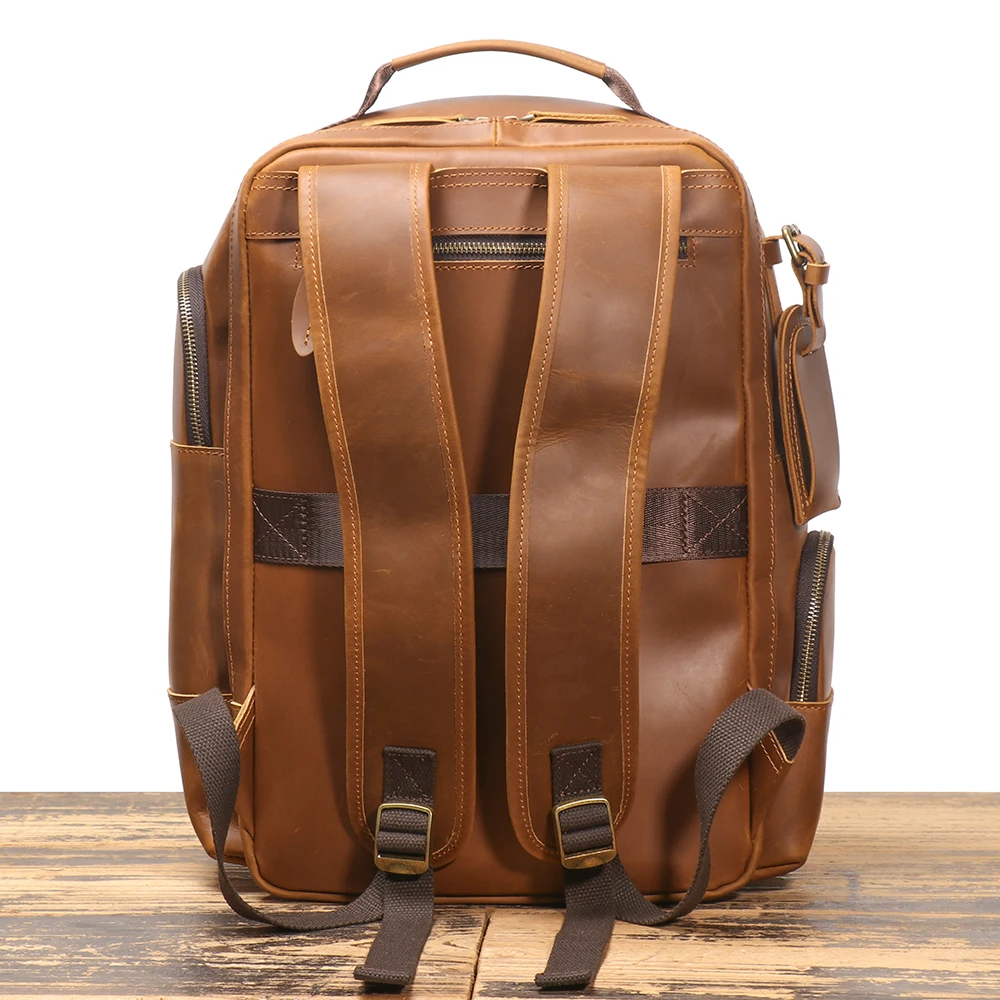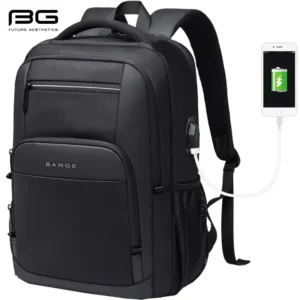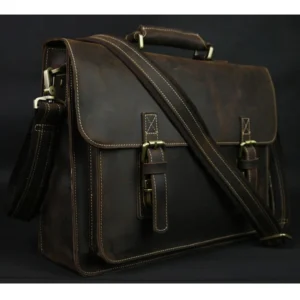Understanding Leather Thickness Measurements
When it comes to leather backpacks, thickness is one of the most crucial factors determining quality, durability, and function. Leather thickness is measured in two primary ways: ounces (oz) in North America and millimeters (mm) in most other parts of the world. One ounce equals approximately 1/64 inch or 0.4 millimeters of thickness.
Understanding these measurements is essential because they directly impact how your backpack will perform and age over time. A backpack made with leather that’s too thin may sag, tear at stress points, or fail to protect your belongings. Conversely, leather that’s too thick can make a backpack unnecessarily heavy and rigid.
For quick reference, here’s a conversion chart showing the relationship between ounces and millimeters:
| Leather Weight (oz) | Thickness (mm) |
|---|---|
| 2 oz | 0.8 mm |
| 3 oz | 1.2 mm |
| 4 oz | 1.6 mm |
| 5 oz | 2.0 mm |
| 6 oz | 2.4 mm |
| 7 oz | 2.8 mm |
| 8 oz | 3.2 mm |
| 9 oz | 3.6 mm |
| 10 oz | 4.0 mm |
| 12 oz | 4.8 mm |
This foundation of understanding leather thickness will help you make informed decisions about backpack quality. The choosing leather rucksack buyer’s guide provides additional foundational knowledge that complements this thickness information.
Ideal Leather Thickness for Different Backpack Components
A well-designed leather backpack isn’t made with uniform thickness throughout. Different components require specific thicknesses to optimize function, durability, and comfort. Understanding these variations helps you assess quality and make better purchasing decisions.
Main Body and Panels
For the main body of a backpack, a thickness of 4-6 oz (1.6-2.4 mm) provides the ideal balance of structure and flexibility. This range allows the backpack to maintain its shape while conforming somewhat to your body and contents. Anything thinner than 4 oz may lead to sagging and premature wear, while thicker leather might make the backpack unnecessarily heavy.
Shoulder Straps and Handles
These components bear significant weight and stress, requiring thicker leather for durability. The optimal range is typically 8-10 oz (3.2-4.0 mm). This thickness prevents stretching and deformation over time. Many quality backpacks feature layered construction for straps, combining thicker leather for strength with padded backing for comfort.
Bottom Reinforcements
The bottom of your backpack endures the most abrasion and weight stress. Premium backpacks use 8-10 oz (3.2-4.0 mm) leather here, often with additional reinforcement or double layers. This prevents premature wear when the backpack is set down on various surfaces.
Flaps and Closures
These components need to balance flexibility with structure. A range of 5-7 oz (2.0-2.8 mm) typically works best, allowing the flap to bend easily while maintaining enough rigidity to protect the contents and keep its shape.
Internal Pockets and Dividers
For interior organization features, thinner leather of 2-3 oz (0.8-1.2 mm) is preferable to minimize bulk while providing durability. This lighter weight prevents the backpack from becoming unnecessarily heavy.
Understanding these component-specific requirements helps you recognize quality craftsmanship. When what to look for in leather rucksack becomes a priority, thickness variations between components is a telling sign of thoughtful design. Our collection of full-grain leather backpacks demonstrates these principles in action, with carefully selected thicknesses for each component.
Premium Leather Thickness for Different Backpack Styles
Different backpack styles serve distinct purposes, and their ideal leather thickness varies accordingly. Understanding these differences helps you select a backpack that perfectly matches your needs.
| Backpack Style | Recommended Body Thickness | Key Considerations |
|---|---|---|
| Executive/Professional | 4-5 oz (1.6-2.0 mm) | Sleek appearance, moderate weight, sufficient structure |
| Everyday Urban | 5-6 oz (2.0-2.4 mm) | Balance of durability and comfort for daily use |
| Travel/Adventure | 6-8 oz (2.4-3.2 mm) | Higher durability for varied conditions and heavier loads |
| Minimalist Fashion | 3-4 oz (1.2-1.6 mm) | Lighter weight, softer drape, emphasis on aesthetics |
| Heavy-duty Outdoor | 7-10 oz (2.8-4.0 mm) | Maximum durability, protection against elements |
Executive backpacks typically feature moderate thickness leather that maintains a professional silhouette without unnecessary bulk. The smooth, refined appearance is crucial for business environments, while still providing adequate protection for laptops and documents.
Everyday urban backpacks require a versatile thickness that balances durability with comfort. The 5-6 oz range allows these backpacks to withstand daily commuting while remaining comfortable when worn for extended periods.
Travel backpacks benefit from thicker leather, especially at stress points. The increased thickness provides protection against rough handling and varied environmental conditions. Despite the additional weight, the durability benefit is essential for this usage scenario.
Fashion-forward minimalist backpacks often use slightly thinner leather to achieve a sleeker silhouette and natural drape. The aesthetic consideration is primary, though quality designs still maintain adequate durability.
Outdoor-focused backpacks use the thickest leather, prioritizing protection against rough conditions and heavy use. These backpacks emphasize longevity and weather resistance over weight considerations.
For a deeper understanding of how thickness relates to backpack styles, our guide on leather backpack styles explained provides comprehensive insights into design considerations beyond thickness.
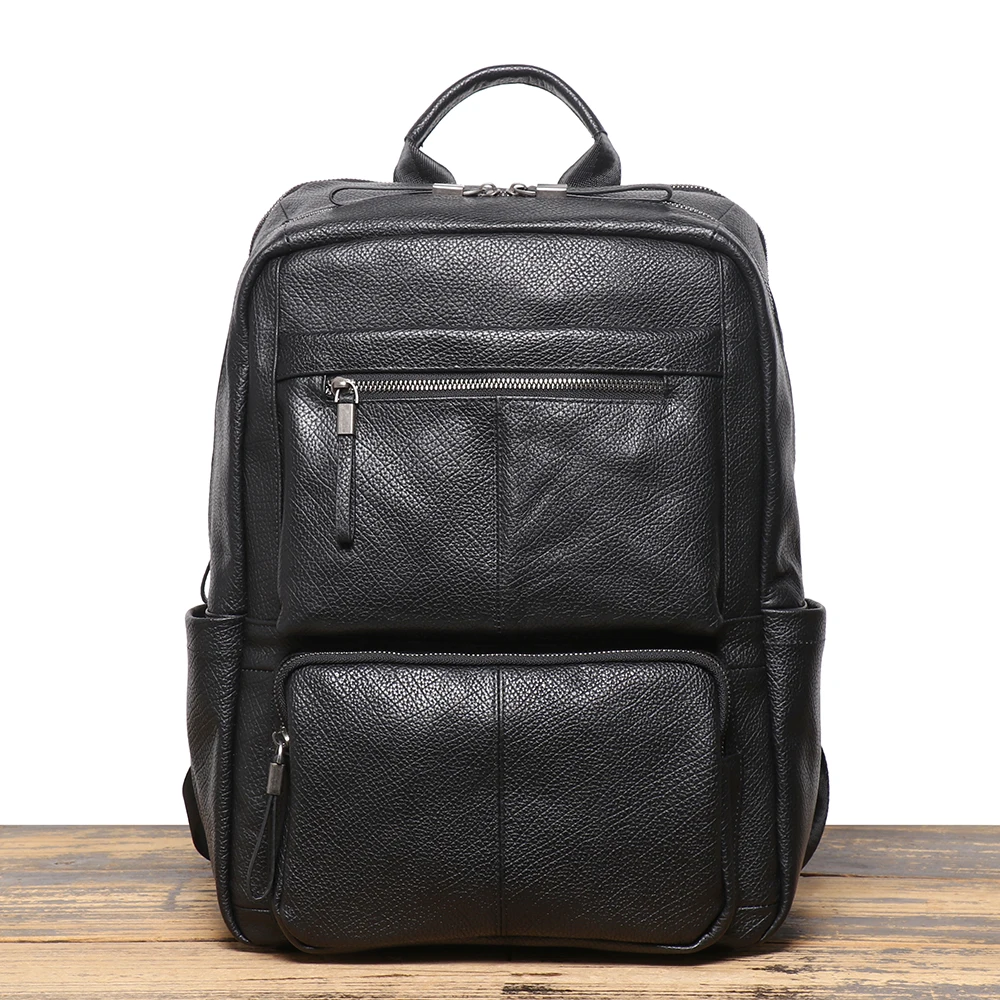
How Leather Thickness Impacts Durability and Longevity
Leather thickness directly influences how long your backpack will last and how well it stands up to daily use. Thicker leather generally provides greater resistance to punctures, tears, and abrasion—the common culprits behind premature backpack failure.
Stress points—such as strap attachments, corners, and the bottom of the backpack—benefit most from increased thickness. When these areas are crafted with appropriately thick leather (typically 8-10 oz), they resist stretching and tearing even when carrying heavy loads. Many premium backpacks use strategic reinforcement at these points to extend lifespan without making the entire bag excessively heavy.
Thicker leather also tends to develop a more distinctive and attractive patina over time. The depth of color changes and character marks that appear with use are often more pronounced and nuanced in thicker cuts, enhancing the backpack’s aesthetic appeal as it ages.
However, there’s an important balance to consider. While 10-12 oz leather might seem ideal for maximum durability, the resulting backpack would be prohibitively heavy for daily use. The art of quality backpack design lies in using the appropriate thickness for each component—thick enough for durability but not so thick that it compromises usability.
This durability-to-weight ratio explains why premium luxury leather backpacks command higher prices. They’re engineered with optimal thickness selections throughout, ensuring longevity without unnecessary bulk. For more specific information on factors affecting backpack lifespan, our durable leather backpacks ultimate guide explores this topic in depth.
Structure and Shape Retention: Finding the Right Balance
A backpack’s ability to maintain its intended shape—both when full and empty—depends significantly on leather thickness. This quality, sometimes called “stand-up quality,” refers to how well a backpack holds its form without sagging or collapsing.
Leather that’s 5-6 oz (2.0-2.4 mm) typically provides enough structure for most backpack designs to maintain their shape when empty, creating that desirable freestanding quality that signals quality craftsmanship. This is especially important for professional backpacks and those designed to protect electronics.
For laptop backpacks, the structure provided by proper thickness is particularly crucial. A well-designed leather laptop backpack uses slightly thicker leather (often 6-7 oz) in panels that protect electronic devices, creating a protective shell that maintains its shape even with frequent use.
Some backpack designs incorporate additional structural elements beyond leather thickness. These might include hidden stiffeners in the back panel, reinforced bottoms, or structured front panels. These elements work in concert with appropriately thick leather to create a backpack that retains its intended silhouette throughout its life.
The balance between structure and flexibility varies by design intention. A vintage-inspired backpack might use slightly thicker leather for a more structured, classic look, while a modern minimalist design might use thinner leather with strategic reinforcement to achieve a sleeker profile while maintaining functionality.
Weight Considerations: Balancing Thickness and Practicality
Weight is one of the most noticeable practical impacts of leather thickness in backpack design. Each ounce increase in leather thickness adds significant weight to the finished product, directly affecting comfort during extended wear.
To put this in perspective, a backpack made entirely of 8 oz leather could weigh nearly twice as much as one made with 4 oz leather of the same dimensions. For daily commuters or travelers, this weight difference becomes significant over time.
Smart designers use varying thicknesses strategically to optimize weight distribution. They might use:
– Thicker leather (7-8 oz) for the bottom and stress points
– Medium thickness (5-6 oz) for the main body panels
– Lighter leather (3-4 oz) for interior organization features
This strategic approach maintains durability where needed while reducing overall weight. When evaluating backpacks, pay attention to this thoughtful variation in thickness—it’s a hallmark of quality design.
The leather rucksack sizing guide provides additional insight into how dimensions and thickness work together to determine a backpack’s carrying capacity and overall proportions. Understanding these relationships helps you select a backpack that balances weight considerations with your specific carrying needs.
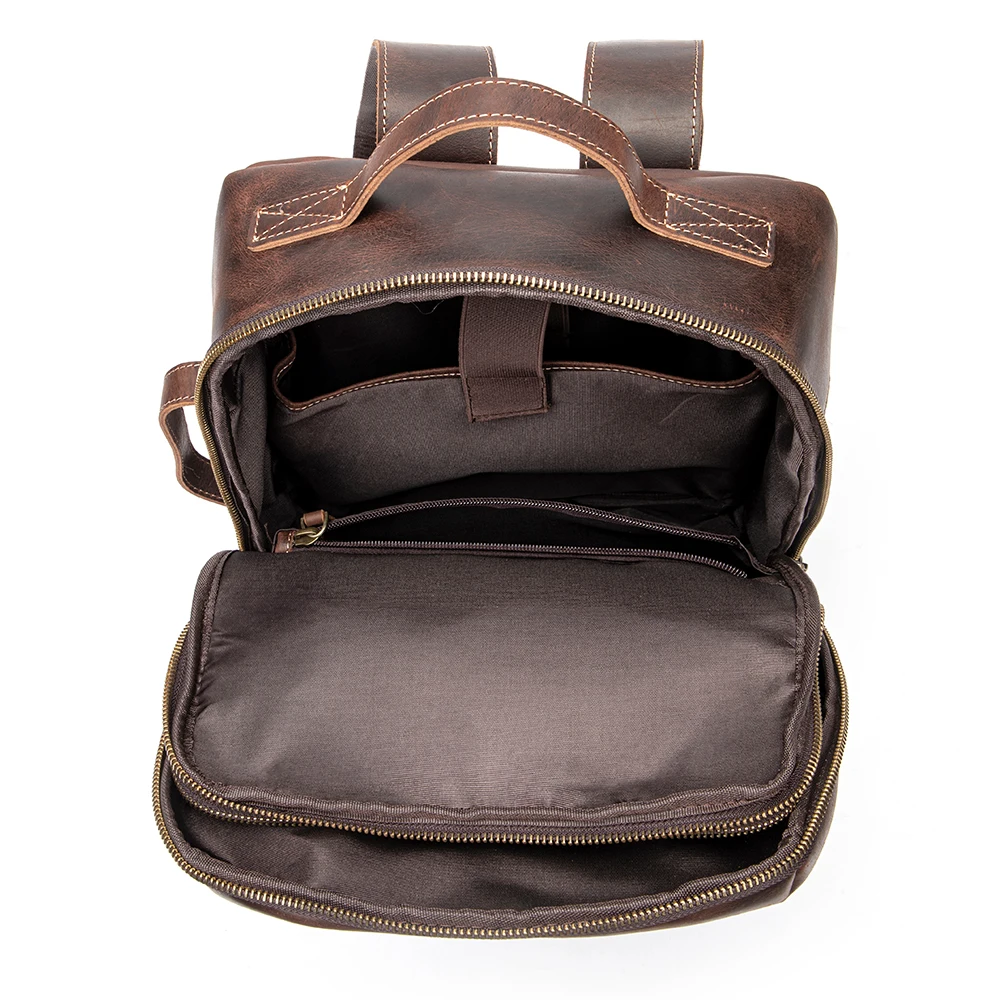
Understanding Leather Temper and Its Relationship to Thickness
Leather temper—the degree of softness or firmness—works hand-in-hand with thickness to determine how a backpack performs. Even when two leather pieces have identical thickness measurements, their temper can create dramatically different results in the finished backpack.
Temper is largely determined by the tanning process:
Vegetable-tanned leather typically has a firmer temper, providing more structure at a given thickness. This leather starts relatively rigid but softens gradually with use, developing a unique patina. At 5-6 oz, vegetable-tanned leather creates a backpack with excellent structure and a classic appearance.
Chrome-tanned leather generally has a softer, more supple temper from the start. It might require greater thickness to achieve the same structural integrity as vegetable-tanned leather. However, its natural flexibility makes it comfortable from the first use, with less break-in time required.
Combination-tanned leather offers middle-ground characteristics, often providing a good balance of structure and immediate flexibility. This leather type is increasingly popular for premium backpacks.
When selecting a backpack, consider how temper and thickness work together. A 4 oz vegetable-tanned leather might provide similar structure to a 5-6 oz chrome-tanned leather. This relationship affects not just the backpack’s appearance but also its break-in period and how it conforms to your body over time.
For a deeper exploration of quality factors including temper, thickness, and tanning methods, our quality leather backpacks guide provides comprehensive information to help you make an informed decision.
Premium Leather Types and Their Natural Thickness Properties
Different leather types have inherent characteristics that influence their ideal thickness for backpack construction. Understanding these differences helps explain why certain leathers are preferred for specific backpack styles.
Full-Grain Leather
This highest quality leather retains the entire grain layer, making it exceptionally strong even at moderate thicknesses. Full-grain leather typically works well for backpacks at 5-6 oz (2.0-2.4 mm), providing excellent durability without excessive weight. Its natural surface imperfections develop into a beautiful patina over time, making it ideal for heritage-style backpacks meant to last for decades.
Top-Grain Leather
Slightly thinner than full-grain due to the sanding process that removes the outermost layer, top-grain leather typically performs well in backpacks at 5-7 oz (2.0-2.8 mm). It offers good durability with a more consistent appearance than full-grain, making it popular for contemporary backpack designs.
Cowhide
The most common leather source for backpacks, cowhide varies widely in quality and thickness. Premium cowhide used for backpacks typically ranges from 4-8 oz (1.6-3.2 mm) depending on the component. Its balanced strength-to-weight ratio makes it versatile for various backpack styles.
Goat Leather
Notably stronger by weight than cowhide, goat leather can be used at slightly lower thicknesses while maintaining durability. A 4-5 oz (1.6-2.0 mm) goat leather might provide similar strength to 5-6 oz cowhide. This makes it excellent for lightweight backpack designs where minimizing weight is a priority.
Bison Leather
With its distinctive grain pattern and exceptional durability, bison leather creates remarkably tough backpacks. It’s typically used at 5-7 oz (2.0-2.8 mm) for backpack bodies, creating products with excellent weather resistance and a unique appearance that stands out from traditional cowhide options.
The question of is full-grain leather better backpacks explores these differences in detail, particularly how full-grain’s natural thickness properties benefit long-term durability. Our collection of men’s leather backpacks showcases various leather types at their optimal thicknesses.
14 Inch Leather Laptop Backpack, Brown Leather Backpack, Men's Leather Backpack, Vintage Leather Backpack
Price range: $177.28 through $199.12 Select options This product has multiple variants. The options may be chosen on the product pageCarry On Leather Backpack, Roll Top Leather Backpack
Price range: $77.76 through $96.48 Select options This product has multiple variants. The options may be chosen on the product pageDesigner Men's Backpack, Men's Leather Laptop Backpack, Men's Leather Work Backpack
Price range: $158.04 through $160.04 Select options This product has multiple variants. The options may be chosen on the product pageDesigner Mini Backpack, Mini Leather Backpack, Small Leather Sling Backpack, Women's Leather Backpack
Price range: $95.76 through $98.80 Select options This product has multiple variants. The options may be chosen on the product pageDesigner Mini Backpack, Designer Women's Backpack, Mini Leather Backpack, Women's Leather Backpack
Price range: $135.92 through $137.64 Select options This product has multiple variants. The options may be chosen on the product page15 Inch Leather Laptop Backpack, Leather Briefcase Backpack
$332.96 Select options This product has multiple variants. The options may be chosen on the product page
Measuring Tools and Techniques for Leather Thickness
Whether you’re evaluating a finished backpack or selecting leather for a custom piece, understanding how to measure thickness accurately is valuable knowledge.
The most common tools for measuring leather thickness include:
- Digital calipers: Providing precise measurements to 0.01mm, these are the gold standard for accuracy
- Leather thickness gauges: Purpose-built tools calibrated specifically for leather measurement
- Traditional calipers: Mechanical tools that provide reliable measurements without requiring batteries
When measuring leather thickness on a finished backpack, take readings from multiple areas since thickness can vary even within a single panel. Focus particularly on:
- Edges (where thickness is most visible)
- Center of panels (where structural integrity matters most)
- Stress points like strap attachments
- Reinforced areas like the bottom
Be aware that some manufacturers list the pre-finishing thickness in their specifications. Finishing processes like burnishing and edge coating can reduce final thickness by 0.2-0.5mm compared to the raw leather. Understanding this difference helps you interpret thickness specifications more accurately when comparing backpacks.
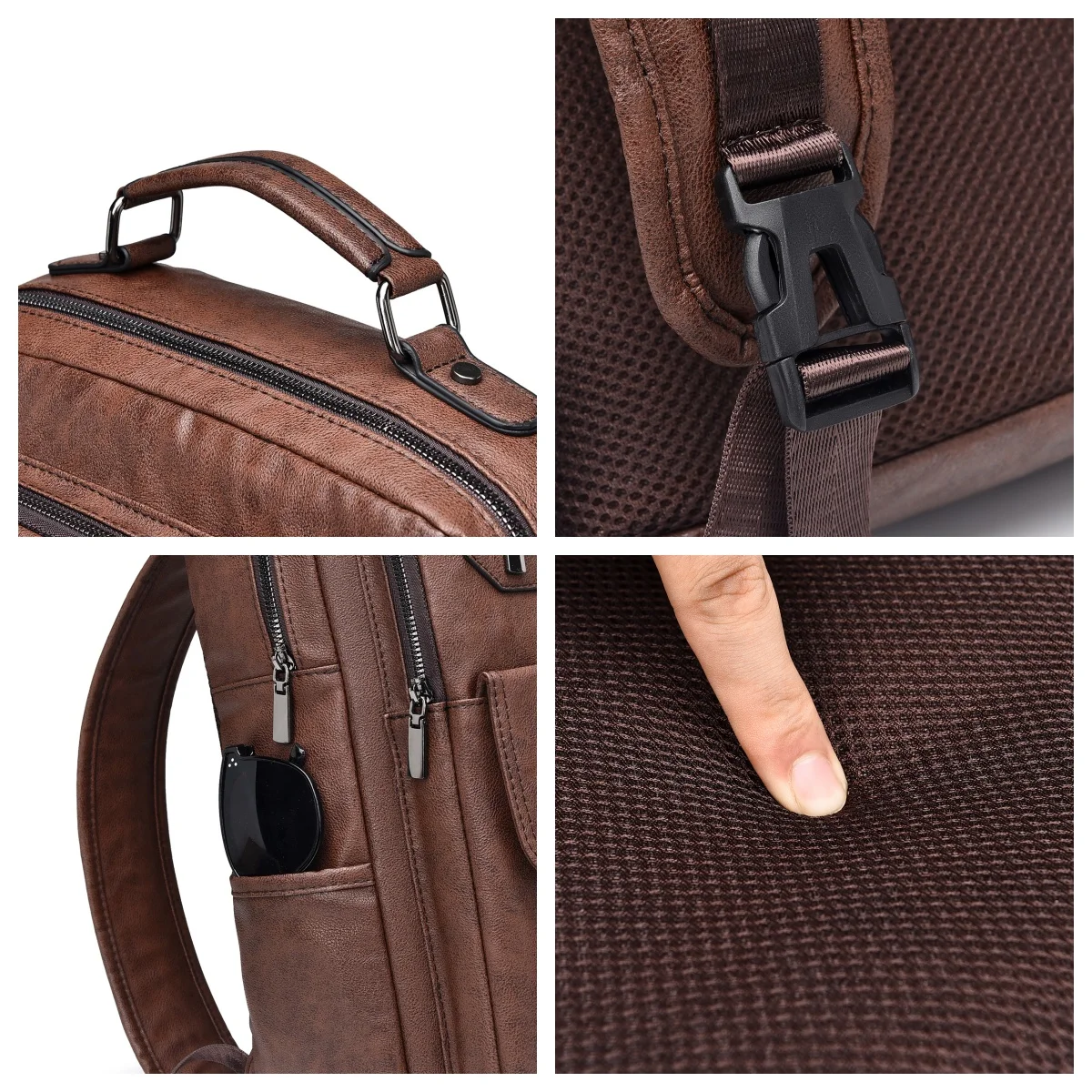
Beyond Thickness: Critical Quality Factors for Premium Leather Backpacks
While thickness is fundamental to backpack quality, it works alongside several other factors to create a truly premium leather backpack. Understanding these complementary elements helps you make a more comprehensive quality assessment.
Stitching Techniques
The most durable backpacks feature saddle stitching at critical stress points. This hand-sewn technique creates a lockstitch that won’t unravel even if some stitches break. Machine stitching with high stitch-count (6-8 stitches per inch) provides good durability for less stressed areas.
Edge Finishing
Quality edge finishing prevents moisture absorption and delamination over time. Look for burnished edges on thicker components and folded edges or edge paint on thinner leather parts. Proper edge work complements appropriate thickness by sealing vulnerable areas against wear.
Hardware Quality
Solid brass or stainless steel hardware complements thick leather’s durability. Cheap hardware often fails before quality leather, undermining the investment in proper thickness. Look for smooth-operating zippers, solid buckles, and D-rings with substantial heft.
Interior Construction
The best backpacks feature thoughtfully constructed interiors with reinforcements at stress points. Even if the interior uses thinner leather (2-3 oz) for organization features, these should be secured with quality stitching to thicker structural components.
Leather Cutting Efficiency
Premium backpacks use leather cut with the grain oriented for maximum strength. This means cutting panels so the leather’s natural grain aligns with the direction of primary stress. This technique maximizes the structural benefit of thickness through proper orientation.
These factors work synergistically with appropriate thickness to create backpacks of exceptional quality. Our vintage leather backpack collection demonstrates this comprehensive approach to quality, where thickness is just one part of the craftsmanship equation.
FAQ: Common Questions About Leather Thickness for Backpacks
Is thicker leather always better for backpacks?
No. While thicker leather generally offers more durability, excessive thickness adds unnecessary weight and rigidity. The ideal thickness varies by component and backpack purpose. A well-designed backpack uses appropriate thickness for each component rather than maximizing thickness throughout.
How can I tell if my backpack’s leather is the right thickness?
Examine how the backpack maintains its shape when empty. Quality backpacks with proper thickness will stand upright without significant sagging. Also check stress points like strap attachments—these should feel substantial without being bulky. The edges can also reveal thickness; they should appear substantial but not excessive.
Will thinner leather necessarily wear out faster?
Not always. A well-designed backpack made with 4-5 oz premium full-grain leather can outlast a poorly constructed 8 oz backpack. Leather quality, construction techniques, and appropriate thickness for specific components all contribute to longevity.
Should all parts of my backpack be the same thickness?
Definitely not. Quality backpacks use varying thicknesses—typically thicker leather for stress points and structure (6-10 oz) and thinner leather for interior features and decorative elements (2-4 oz). This strategic variation optimizes weight, flexibility, and durability.
How does thickness affect breaking in a new backpack?
Thicker leather (6+ oz) typically takes longer to break in and conform to your body. Thinner leather (3-5 oz) softens more quickly with use. This break-in period affects not just comfort but also how the backpack develops its characteristic patina. Proper how maintain leather backpack practices can help optimize this break-in process regardless of thickness.
Making an Informed Decision: Putting Thickness Knowledge into Practice
Armed with understanding about leather thickness, you’re now equipped to make better decisions when selecting a leather backpack. Remember these key considerations:
Look for strategic thickness variation throughout the backpack—thicker leather for stress points and structure, thinner leather where flexibility is needed. This balanced approach signals thoughtful design and optimal functionality.
Consider your primary use case when evaluating thickness. If you’ll carry heavy loads regularly, prioritize backpacks with thicker leather (6-8 oz) in structural components. For lighter everyday use, moderate thickness (4-6 oz) often provides the best balance of durability and weight.
Recognize that thickness works alongside leather quality, tanning method, and construction techniques. A well-made backpack from 5 oz full-grain leather will typically outperform a poorly made one from 8 oz lower-quality leather.
Finally, consider how thickness affects the aesthetic you prefer. Thicker leather creates a more structured, architectural look, while thinner leather offers a softer, more relaxed appearance. Your personal preference for how a backpack drapes and ages should influence your thickness decisions.
Browse our collection of leather backpacks to see how these thickness principles are applied across different styles and designs.

